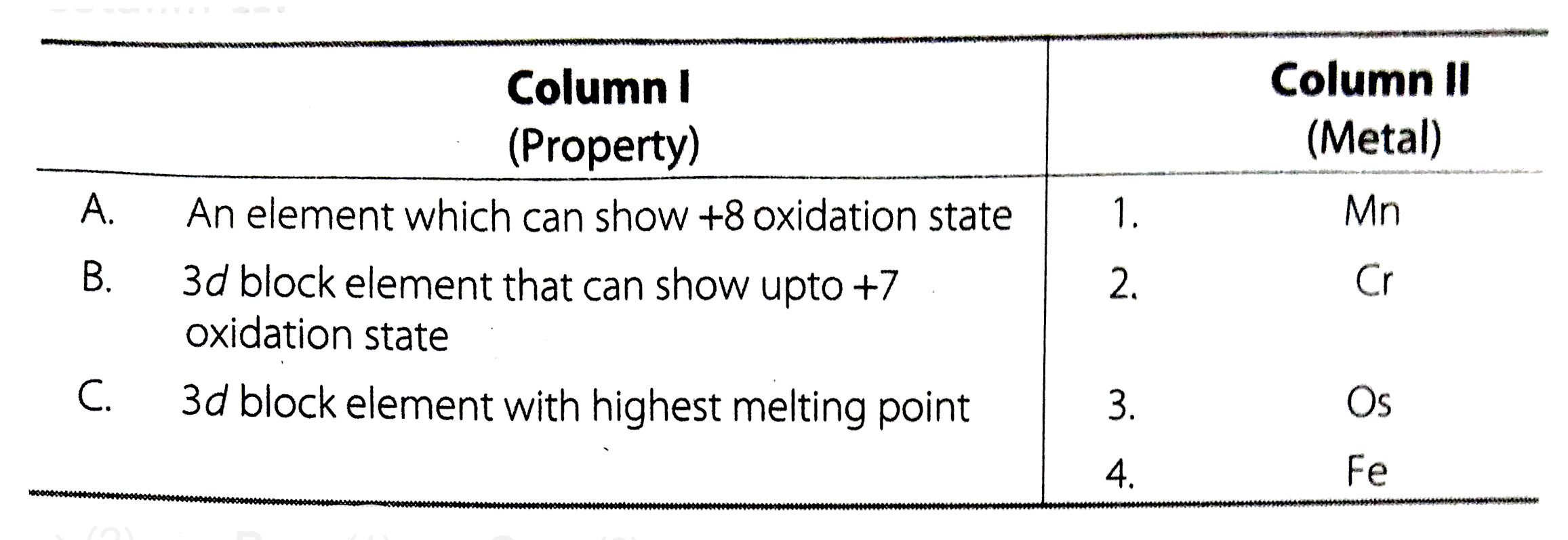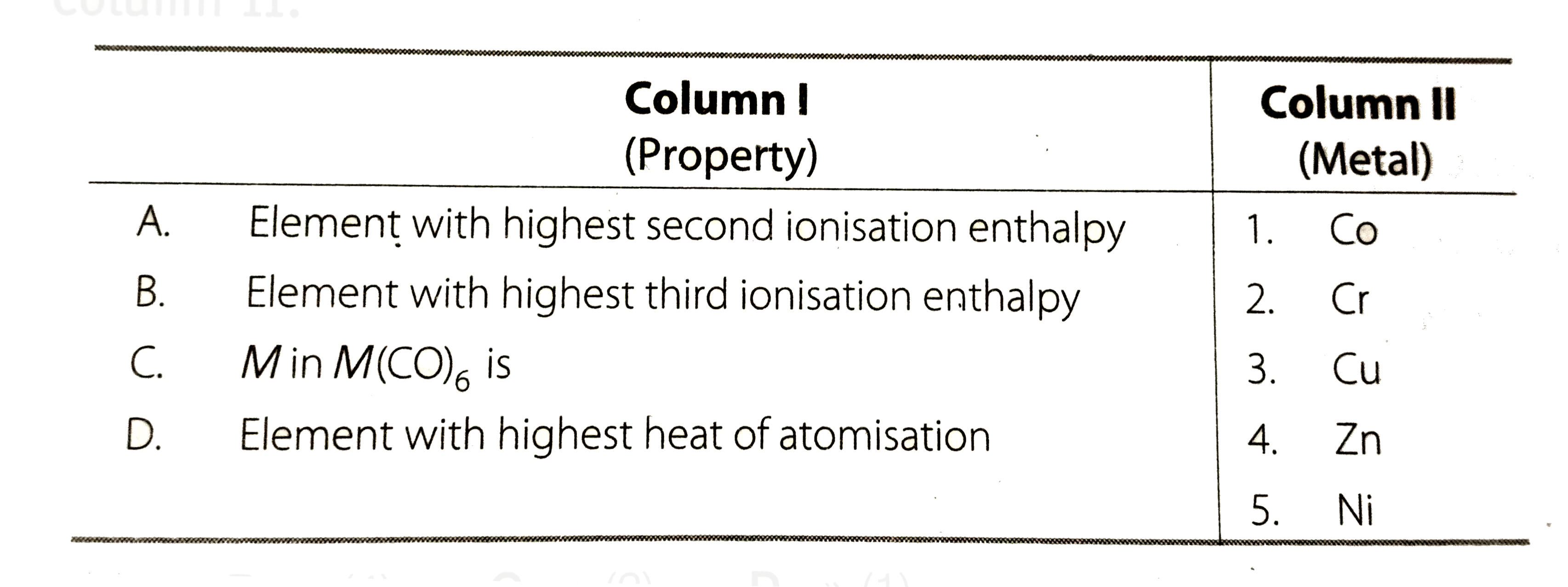Match the extraction processes listed in Column I with metals listed in Column II.
Column IColumn II(A)Self reduction(p)Lead(B)Carbon reduction(q)Silver(C)Complex formation and displacement by metal(r)Copper(D)Decomposition of iodide(s)Boron
The correct Answer is:A→p,r;B→p,r;C→q;D→s
To solve the problem of matching the extraction processes from Column I with the metals listed in Column II, we can analyze each extraction process and determine which metal corresponds to it.
1. Self Reduction (A):
- Self reduction is a process where a metal is reduced from its ore without the addition of an external reducing agent.
- Both Lead (P) and Copper (R) can be extracted using self-reduction.
- Match: A → P, R
2. Carbon Reduction (B):
- Carbon reduction involves using carbon as a reducing agent to extract metals from their oxides.
- Both Lead (P) and Copper (R) can also be extracted through carbon reduction.
- Match: B → P, R
3. Complex Formation and Displacement by Metal (C):
- This process typically involves the formation of a complex with a metal ion, followed by the displacement of that metal.
- Silver (Q) is commonly extracted through this method, particularly using cyanide complexes.
- Match: C → Q
4. Decomposition of Iodide (D):
- The decomposition of iodides can lead to the formation of certain metals.
- Boron (S) is extracted through this process, specifically from boron triiodide.
- Match: D → S
Final Matches:
- A → P, R (Self Reduction matches with Lead and Copper)
- B → P, R (Carbon Reduction matches with Lead and Copper)
- C → Q (Complex Formation matches with Silver)
- D → S (Decomposition of Iodide matches with Boron)
Summary of Matches:
- A (Self Reduction) → P (Lead), R (Copper)
- B (Carbon Reduction) → P (Lead), R (Copper)
- C (Complex Formation and Displacement by Metal) → Q (Silver)
- D (Decomposition of Iodide) → S (Boron)
- Self reduction is a process where a metal is reduced from its ore without the addition of an external reducing agent.
- Both Lead (P) and Copper (R) can be extracted using self-reduction.
- Match: A → P, R
- Carbon reduction involves using carbon as a reducing agent to extract metals from their oxides.
- Both Lead (P) and Copper (R) can also be extracted through carbon reduction.
- Match: B → P, R
- This process typically involves the formation of a complex with a metal ion, followed by the displacement of that metal.
- Silver (Q) is commonly extracted through this method, particularly using cyanide complexes.
- Match: C → Q
- The decomposition of iodides can lead to the formation of certain metals.
- Boron (S) is extracted through this process, specifically from boron triiodide.
- Match: D → S
- A → P, R (Self Reduction matches with Lead and Copper)
- B → P, R (Carbon Reduction matches with Lead and Copper)
- C → Q (Complex Formation matches with Silver)
- D → S (Decomposition of Iodide matches with Boron)
- A (Self Reduction) → P (Lead), R (Copper)
- B (Carbon Reduction) → P (Lead), R (Copper)
- C (Complex Formation and Displacement by Metal) → Q (Silver)
- D (Decomposition of Iodide) → S (Boron)
Similar Questions
Match the reactions listed in column-I with the products listed in column-II

View SolutionMatch the compound listed in Column I with characteristic listed in Column II

View SolutionMatch the properties given in Column I with the metals given in Column II

View SolutionMatch the properties given in Column I with the metals given in Column II.

View SolutionMatch the items in Column-I with its main use listed in Column-II :

View SolutionMatch the compounds listed in Column-I with use in Column-II

View SolutionMatch the experiment listed under Column I with the aim of the experiment in Column II.

View SolutionMatch the complexes in Column-I with their properties listed in Column-II

View SolutionMatch the extraction processes listed in column −I with metals listed in column−II and choose the correct option.
Column−IColumn−II(a)Self reduction method(p)Aluminium from bauxite(b)Carbon reduction method(q)Mercury from cinnabar(c)Electrolytic reduction method(r)Zinc from zinc blende.(d)Cyanide process(s)Silver from agentite
View SolutionMatch the salts/mixtrues listed in column(I) with their respective name listed in column(II).
 .
.
View Solution